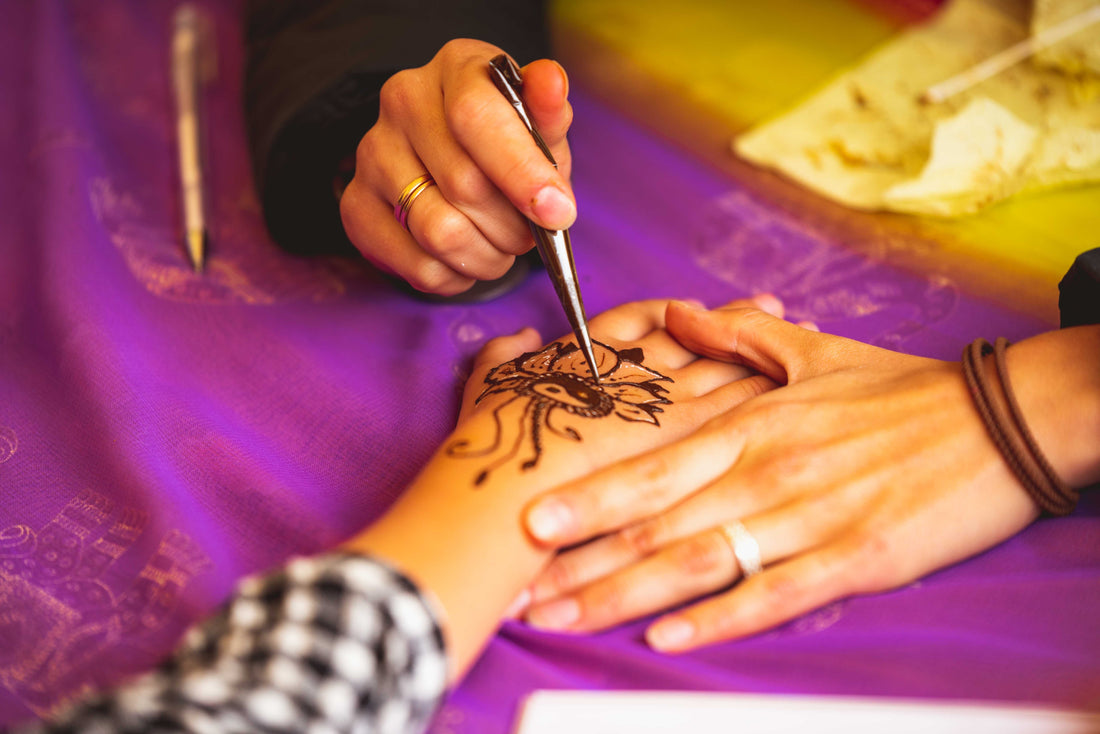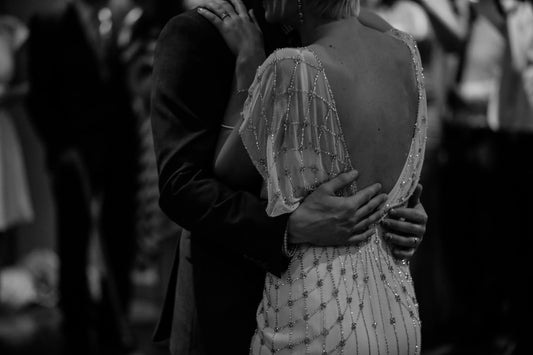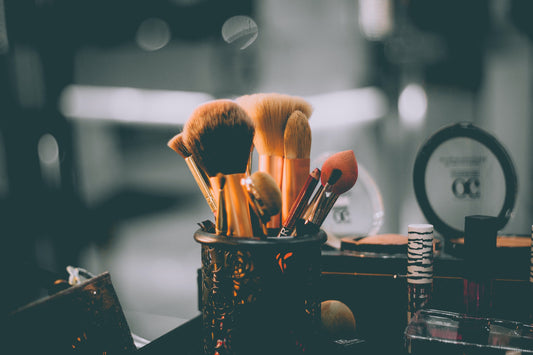Introduction
A henna party is a pre-wedding event for the bride and her friends and family members where they gather to celebrate the bride before she enters her new life.
The main focus of this event is to apply henna paste, a dye made from plants, on the bride's hands and feet with beautiful designs and shapes using specific tools.
For thousands of years, this tradition has been held one or two days before the wedding day as a form of blessing for the newlyweds, as it is believed, according to tradition, that henna brings happiness and contentment to married life.

Many years ago, these parties were held at homes with families and friends, but nowadays brides may celebrate henna day in more luxurious ways by renting large halls and inviting many guests, food, music, colorful dresses and accessories.

Photo By Mehndi Training Center (@mehnditrainingcenter)
The art of applying henna to the hands and feet is a very ancient art and is concentrated in some parts of Asia and the Middle East, while the word Mehndi, which is usually henna leaves that are ground into powder or paste and then used as dyes, is used in India, Pakistan, the Maldives, etc. In the Middle East, they use the word henna to refer to wedding ceremonies using almost the same substance.
The application of henna is to take advantage of the natural medicinal herbal remedies of the plant with the aim of cooling the body and relieving any stress or tension that may befall the bride before her big day.

Photo By Anuar Sheikh (@blackcat7074)
henna art has adorned the hands and feet of countless individuals throughout history. Its rich cultural significance and stunning designs have captivated people from diverse backgrounds.
Join us on a journey back in time as we explore the ancient roots and fascinating history of henna, a timeless art form that continues to thrive in modern times.
I. Ancient Origins: Tracing Henna's Beginnings
Henna, also known as mehndi, has a storied history that spans thousands of years. Its origins can be traced back to ancient civilizations in Egypt, India, and the Middle East. Archaeological evidence suggests that henna was used for decorative purposes as early as 5000 BCE. Ancient Egyptians believed that henna had protective and healing properties, and its use extended beyond body art to include medicinal and ceremonial purposes.

Photo By Elain Yao - Photography
II. Cultural Significance: Henna Across Different Regions
As henna traveled across continents, it took on diverse meanings and cultural significance. In India, henna played a central role in wedding ceremonies, symbolizing love, joy, and blessings. In the Middle East, henna adorned the hands of both men and women during celebrations, festivals, and religious events. Each region developed unique designs and patterns that reflected their cultural heritage and beliefs.

Photo By rehman yousaf - Photography
III. Mystical Symbolism: Henna in Folklore and Traditions
Henna's allure goes beyond its aesthetic appeal. It carries symbolic meanings deeply rooted in folklore and traditions. In many cultures, henna was believed to ward off evil spirits and bring good luck and prosperity. The intricate patterns were also seen as a form of self-expression and a means of invoking blessings and protection.
IV. Journey through Time: Henna in Historical Context
As centuries passed, henna's popularity continued to grow. The art form witnessed significant milestones and transformations, influenced by the rise and fall of empires, cultural exchanges, and migration. From the spread of henna along the Silk Road to its arrival in the Western world, henna's journey through time reflects the interconnectedness of civilizations and the power of cultural exchange.

Photo By Yasmine Arfaoui (@yasmine_photo)
V. Modern Resurgence: Henna in the Contemporary World
In recent decades, henna has experienced a resurgence in popularity, transcending borders and captivating a global audience. Its intricate designs have become sought-after for weddings, festivals, and special occasions. Additionally, henna artists and enthusiasts have embraced social media platforms to showcase their creativity and connect with a wider community.

Photo By Oliver Li - Photography
VI. The Artistry of Henna: Techniques and Styles
Mastering the art of henna requires skill and precision. Artists employ various techniques, such as cone application or freehand painting, to create intricate designs. Different styles of henna have emerged over time, including traditional Indian, Arabic, Moroccan, and contemporary fusion styles, each with its distinct characteristics and motifs.

Photo By Hamza AZAOUZ - Photography
Conclusion
From its ancient origins to its modern-day popularity, henna has woven a captivating tapestry throughout history. Its cultural significance, mystical symbolism, and evolving artistry make it a cherished tradition that continues to thrive in our interconnected world. So, the next time you admire the beautiful patterns adorning someone's hands, remember the timeless journey that henna has undertaken, connecting generations and cultures through its intricate beauty.





